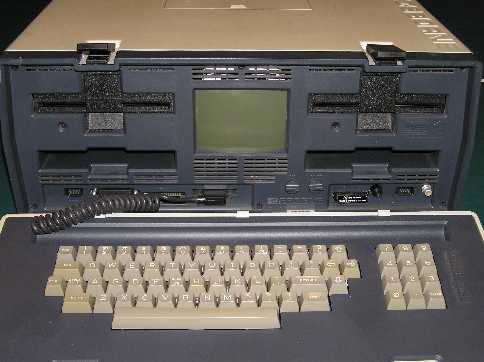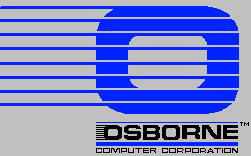





|
NAME |
OSBORNE 1 |
|
MANUFACTURER |
Osborne Corp. |
|
TYPE |
Transportable |
|
ORIGIN |
U.S.A. |
|
YEAR |
1981 |
|
BUILT IN LANGUAGE |
None |
|
KEYBOARD |
Full-stroke keyboard with separated numeric keypad |
|
CPU |
Zilog Z80 A |
|
SPEED |
4 MHz |
|
RAM |
64 KB |
|
ROM |
4 KB |
|
TEXT MODES |
52 / 80 / 104 char. x 24 lines |
|
GRAPHIC MODES |
Only graphic characters |
|
COLORS |
Monochrome |
|
SOUND |
Beeper |
|
SIZE / WEIGHT |
51(W) x 32,5 (D) x 22,5(H) cm. Weight: 10,2 Kg. |
|
I/O PORTS |
RS232, IEEE 488, Modem port, Composite Video |
|
BUILT IN MEDIA |
2 x 5.25'' FDD |
|
OS |
CP/M |
|
POWER SUPPLY |
Built-in power supply unit |
|
PERIPHERALS |
Supplied with: CBasic, WordStar, SuperCalc, MailMerge, DBase II |
|
PRICE |
3201 ℮ |
|
Osborne 1
|
|
Osborne 1 |
|
The first models could not display more than 52 columns, so to access to the 76 other columns, the user had to scroll
among the screen thanks to the cursor keys.
|